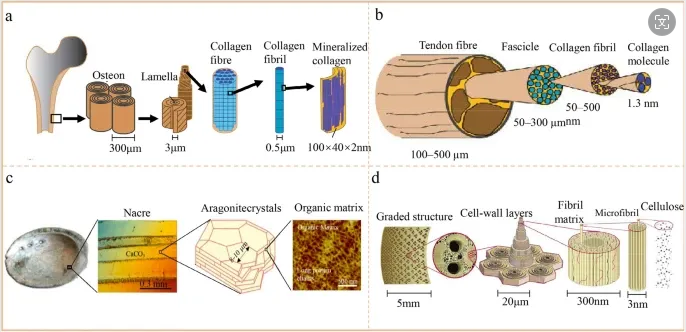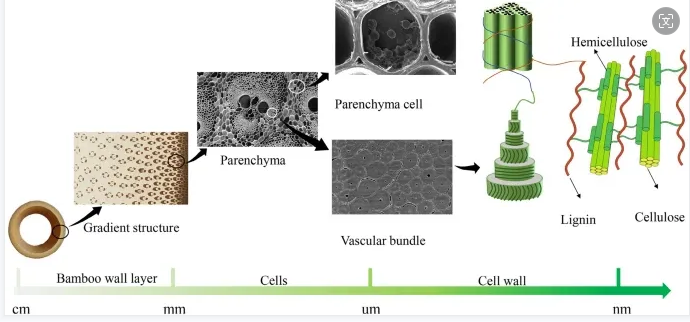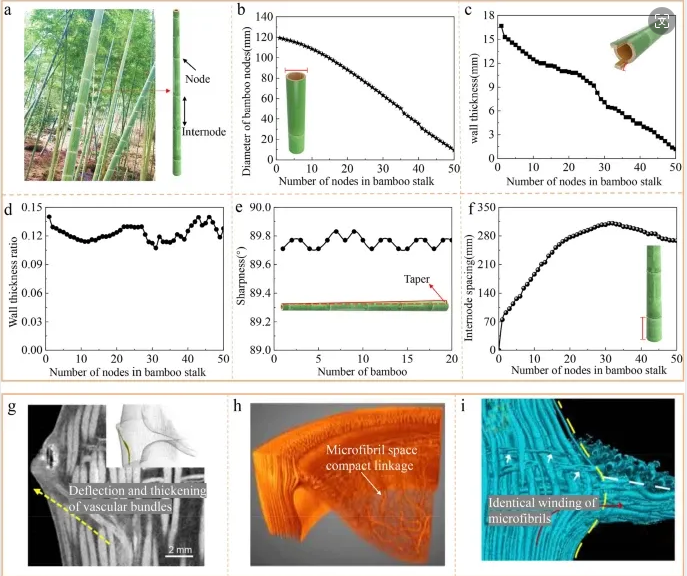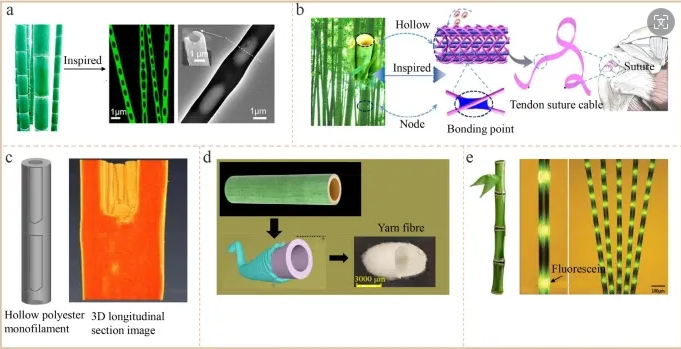引文信息:
Shanyu Han, Yuyuan He, Hanzhou Ye, Xueyong Ren, Fuming Chen, Kewei Liu, Sheldon Q. Shi & Ge Wang.Mechanical Behavior of Bamboo, and Its Biomimetic Composites and Structural Members: A Systematic Review. Journal of Bionic Engineering,2024,21(1),56- 73.
Mechanical Behavior of Bamboo, and Its Biomimetic Composites and Structural Members: A Systematic Review
Shanyu Han, Yuyuan He, Hanzhou Ye, Xueyong Ren, Fuming Chen, Kewei Liu, Sheldon Q. Shi & Ge Wang
1 Institute of Biomaterials for Bamboo and Rattan Resources, International Centre for Bamboo and Rattan, Beijing, 100102, China.
2 Key Laboratory of National Forestry and Grassland Administration/Beijing for Bamboo & Rattan Science and Technology, Beijing, 100102, China.
3 National Forestry and Grassland Engineering Technology Center for Wood Resources Recycling, College of Materials Science and Technology, Beijing Forestry University, Beijing, 100083, China.
4 International Bamboo and Rattan Organization, Beijing, 100102, China.
5 School of Civil Engineering, Tsinghua University, Beijing, 100084, China.
6 Mechanical Engineering Department, University of North Texas, Denton, TX, 76207 7102, USA.
Abstract
Bamboo is a typical biological material widely growing in nature with excellent physical and mechanical properties. It is lightweight with high strength and toughness. The naturally optimized bamboo structure, which has inspired global material scientists and engineers for decades, is significantly important for the bionic design of novel structural materials with ultra-light, ultra-strong, or ultra-tough and comprehensive properties. Typical literature on innovative composite materials and structural members inspired by bamboo are reviewed in this paper, and the research progress and prospects in this field are expounded in three parts. First, the structural characteristics of the bamboo wall layer along the thickness and height directions are described in terms of chemical composition, gradient structure, pore structure, and hollow structure with variable cross-section. Second, this paper summarizes the research progress on new composite materials and structural components by applying bamboo’s structural features from the perspective of sustainability, designability, and customization. Finally, given the limitations of current research, the biomimetic scientific research on bamboo’s structural characteristics is prospected from the interpretation of bamboo structure, new bamboo-like materials, and structural design optimization perspectives, providing a reference for future research on biomimetic aspects of biomass.

Fig. W1 Multi-level structure of natural biomaterials. a Bones (Copyright 2021 Elsevier Ltd), b Tendon(Copyright 2021 Elsevier Ltd), c Shell (Copyright 2021 Elsevier Ltd), and d Bamboo (Copyright 2015 Nature Research Ltd).

Fig. W2 Multilayer gradient structure from mesa- to micro-scale along the bamboo wall layer direction.

Fig. W3 Structural characteristics of bamboo along the height direction. a Bamboo culm. b Distribution law of stem hollow diameter from bottom to top. c Distribution law of stem wall thickness from bottom to tip. d Straw wall thickness ratio from bottom to top . e Taper of bamboo. f The distribution law of bamboo node spacing from the bottom to the top . g Micro-CT image of axial vascular bundle changes .

Fig. W4 Bionic material in the height direction of bamboo. a Laser confocal image of bamboo-like flexible ultra-fine polymer fiber (Copyright 2018 Amer Chem Soc Ltd). b Tendon suture with hollow and porous structure(Copyright 2020 Elsevier Ltd). c Bamboo-like hollow polyester monofilament (Copyright 2019 Elsevier Ltd). d Hollow structural yarn fibers [103] (Copyright 2021 Elsevier Ltd). c Bamboo-like hybrid microfiber (Copyright 2017 Wiley–VCH Verlag GmBH. Ltd).
Information Source: https://rdcu.be/dzocT

